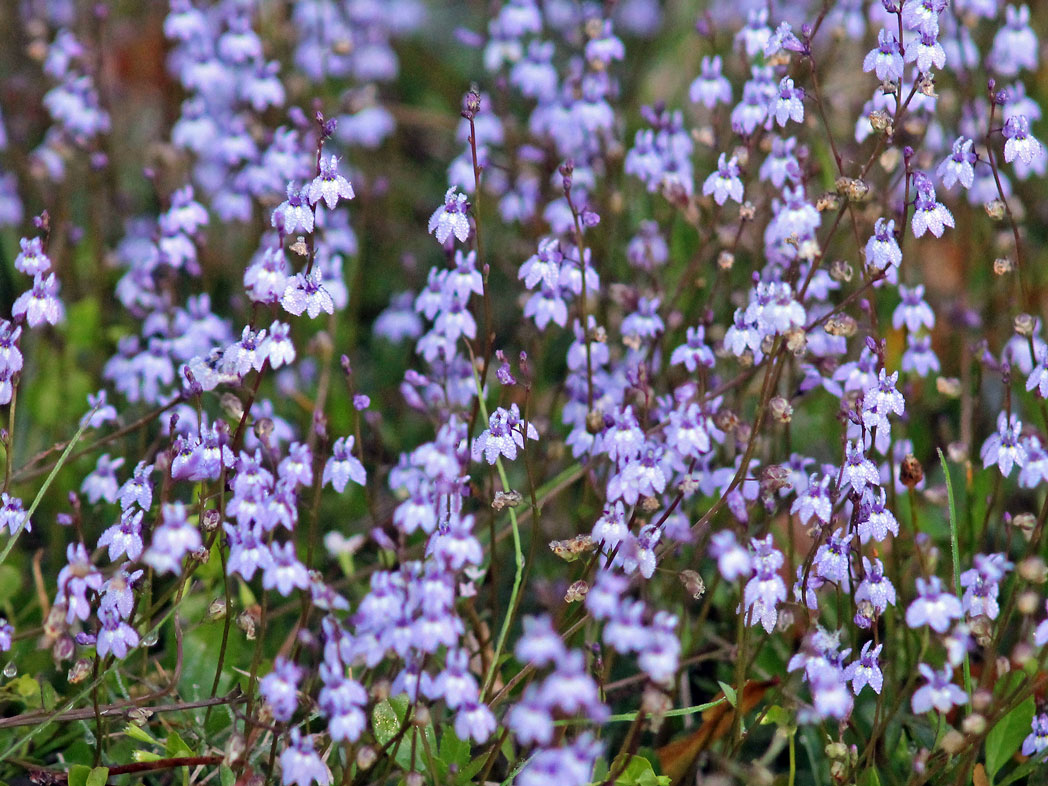Bay lobelia
Pictured above: Bay lobelia (Lobelia feayana) by Mary Keim. Click on terms for botanical definitions. View post as a PDF.
Bay lobelia is a dainty endemic perennial commonly seen on moist roadsides. It typically blooms in January through early spring, but can bloom year-round. The plant occurs naturally in moist habitats, particularly roadside ditches and depressions where, en mass, it appears as a brilliant blue haze. Bees are its primary pollinator.
Bay lobelia flowers are small (1/4- to 1/2-inch long) and vary in color from bluish to lavender to purplish-pink. They are five-petaled: the upper two petals are thin, upright and often reflexed, while the three lower petals are fused to form a lip-like structure. The “lip” base is distinctly white. Basal leaves are small, ovate and petiolate with minutely scalloped margins. Seeds are born in inconspicuous capsules.
The genus Lobelia is named for Matthias de Lobel (1538–1616), a Flemish physician, botanist and author of a landmark botany textbook.
Bay lobelia is often confused with Canadian or blue toadflax (Linaria canadensis), another diminutive wildflower commonly seen en mass along roadsides and with a similar color and flower form.
Family: Campanulaceae (Bellflower family)
Native range: Taylor, Madison and most peninsular counties
To see where natural populations of Bay lobelia have been vouchered, visit florida.plantatlas.usf.edu.
Hardiness: Zones 8B–10B
Soil: Moist, well-drained soils
Exposure: Full sun to light shade
Growth habit: 6–12”+ tall, spreading via underground rhizomes
Propagation: Seed, cuttings, division
Garden tips: Bay lobelia is not typically propagated by nurseries, so your best bet is to collect seed or plant material from someone who is growing it in their landscape (with permission, of course). It is best for naturalistic landscapes and restorations. Its low height and sprawling tendency make it suitable for a groundcover in large, moist areas.
For more information on other Lobelia species, see these resources:

